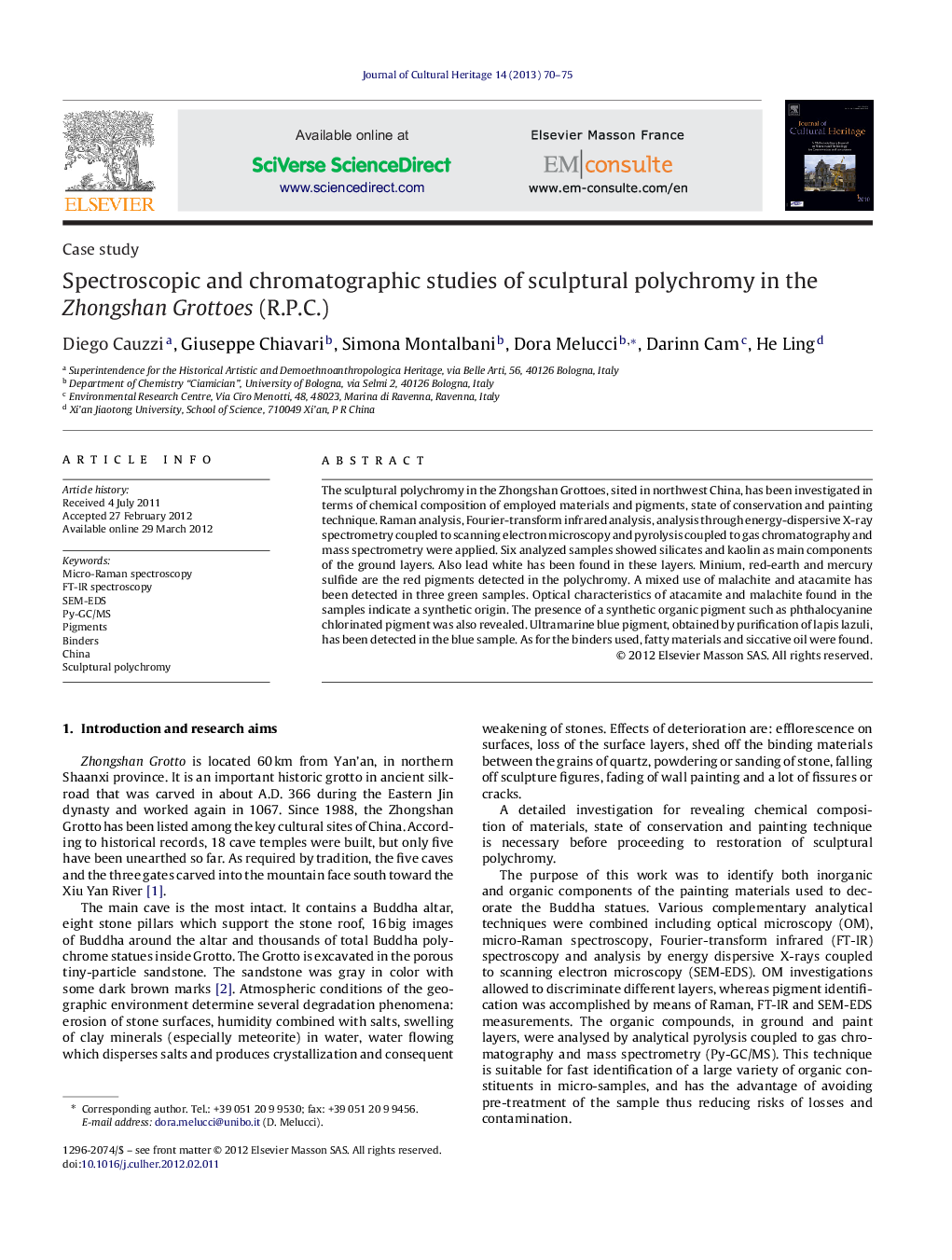| Article ID | Journal | Published Year | Pages | File Type |
|---|---|---|---|---|
| 1038284 | Journal of Cultural Heritage | 2013 | 6 Pages |
The sculptural polychromy in the Zhongshan Grottoes, sited in northwest China, has been investigated in terms of chemical composition of employed materials and pigments, state of conservation and painting technique. Raman analysis, Fourier-transform infrared analysis, analysis through energy-dispersive X-ray spectrometry coupled to scanning electron microscopy and pyrolysis coupled to gas chromatography and mass spectrometry were applied. Six analyzed samples showed silicates and kaolin as main components of the ground layers. Also lead white has been found in these layers. Minium, red-earth and mercury sulfide are the red pigments detected in the polychromy. A mixed use of malachite and atacamite has been detected in three green samples. Optical characteristics of atacamite and malachite found in the samples indicate a synthetic origin. The presence of a synthetic organic pigment such as phthalocyanine chlorinated pigment was also revealed. Ultramarine blue pigment, obtained by purification of lapis lazuli, has been detected in the blue sample. As for the binders used, fatty materials and siccative oil were found.
